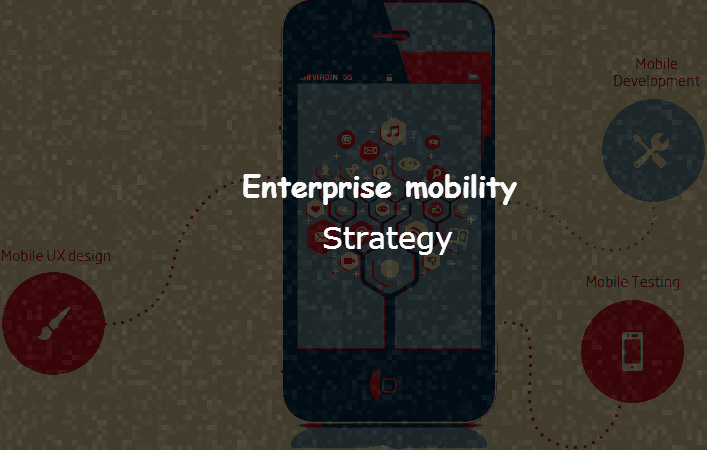The impact of enterprise mobility is surely unignorable with the surprising growth rate it offers. Enterprise mobility, if employed in the correct manner, can boost business opportunities and bring about agility to an enterprise. Moreover, it can increase workforce productivity, ameliorate customer services and business processes, along with the ability to capture real-time data for better decision making.
Table of Contents

Although, most organizations are well aware of the benefits of enterprise mobility, the real task is to design and define the right mobility strategy for their business. Moreover, there is no – One Size Fits All – strategy that you can go for. The common key points to consider include the target audience, re-sizing existing infrastructure, development-related decisions as to whether it has to be done in-house or outsourced, solution-related decisions as to whether it should be created or bought, device support, rollout and training.
A mobility strategy that is not well planned or has well-defined steps of execution can end up yielding no good results. In fact, it may give results that may prove harmful in the long run. Also, it should be noted that defining enterprise mobile strategy is not a one-time task; the strategy needs to be reviewed and refined periodically. Below given is a seven-step strategy for enterprise mobility:
You need to clearly define your mobile vision and business objectives. You should not start developing mobile apps with an unclear vision. Also, the most common mistake organizations make is simply following the footsteps of competitors. Each organization has its own different needs and business strategy; so, you need to make sure that you select the right business process.
With increasing mobility, the IT support environment is also becoming more complex and is expected to bring even more complex challenges in the near future. It is, thus, required to manage different devices and screen sizes. The screen layout and design play a very important role in reducing complexity. Also, each mobile operating system has a different design style guide. So, best practices and proven screen flow need to be adopted along with thorough usability testing before you go live.
Enterprise mobility projects are required to be treated differently than conventional web-based projects. The IT team has to work with business stakeholders very closely. Also, the project delivery stage must be broken into several steps; and review and testing must be done at every stage. Periodic reviews generate confidence and help in bridging the gaps in project execution.
The performance of the application and device must be periodically analyzed and measured. A device is usually measured on the basis of battery consumption, network connectivity, data consumption and camera performance at different resolutions.
Enterprise mobile apps are one of the essential parts of an enterprise security ecosystem, extending from mobile devices to the cloud and the data centre. Simply starting and stopping a mobile software initiative with mobile device management (MDM) is not sufficient. An enhanced mechanism should be employed to safeguard the data that the device accesses, stores or transmits.

Mobility brings complexity and so, enterprises are employing a strategic approach to manage mobile devices and maximize business opportunities whilst minimizing the IT challenges and risk.
Standardizing on just one type of mobile device is no longer sufficient, as there is multiple mobile device operating systems in the market and so, enterprises need to get smart on managing and securing these varying systems. Corporations are required to create a mobile policy checklist and review it periodically as new devices get included with even new functionalities. Also, the device must be authenticated before it is allowed to access corporate data.
Whether an enterprise operates in a local or global environment, it should be understood how data travels and where it is stored. Sometimes, it may be necessary to encrypt data as well.
Merely building one or two mobile apps will not deliver high-end results. The real benefit can only be realized by developing an enterprise-wide mobile application ecosystem. Continued innovation and realigning the enterprise strategy with business objectives is the key to success.
As such, enterprise mobility can benefit organizations in many ways, but it is required to follow a planned and strategic approach, or else the real benefits cannot be realized.